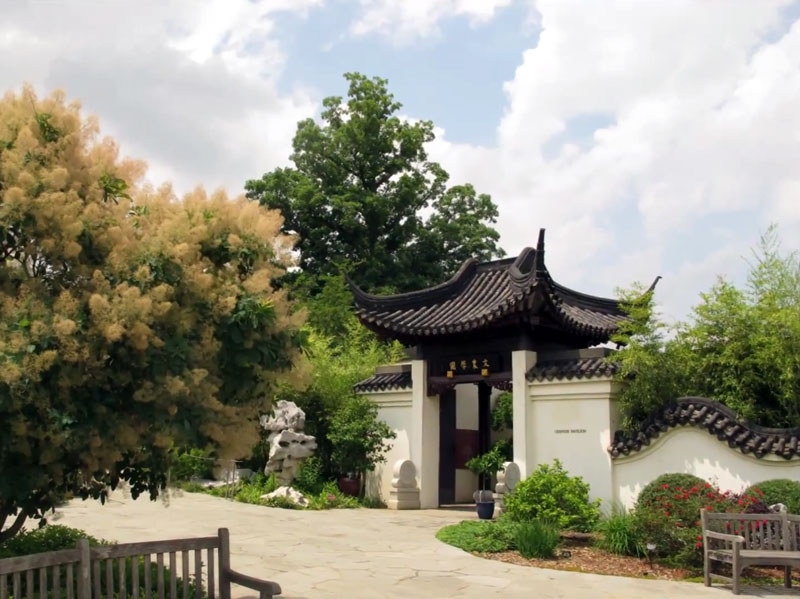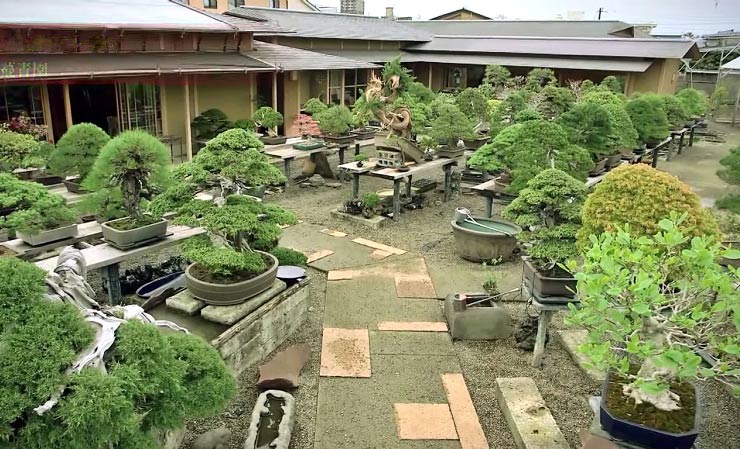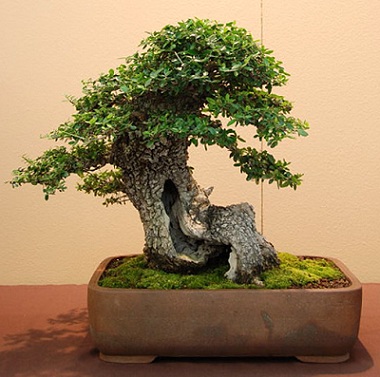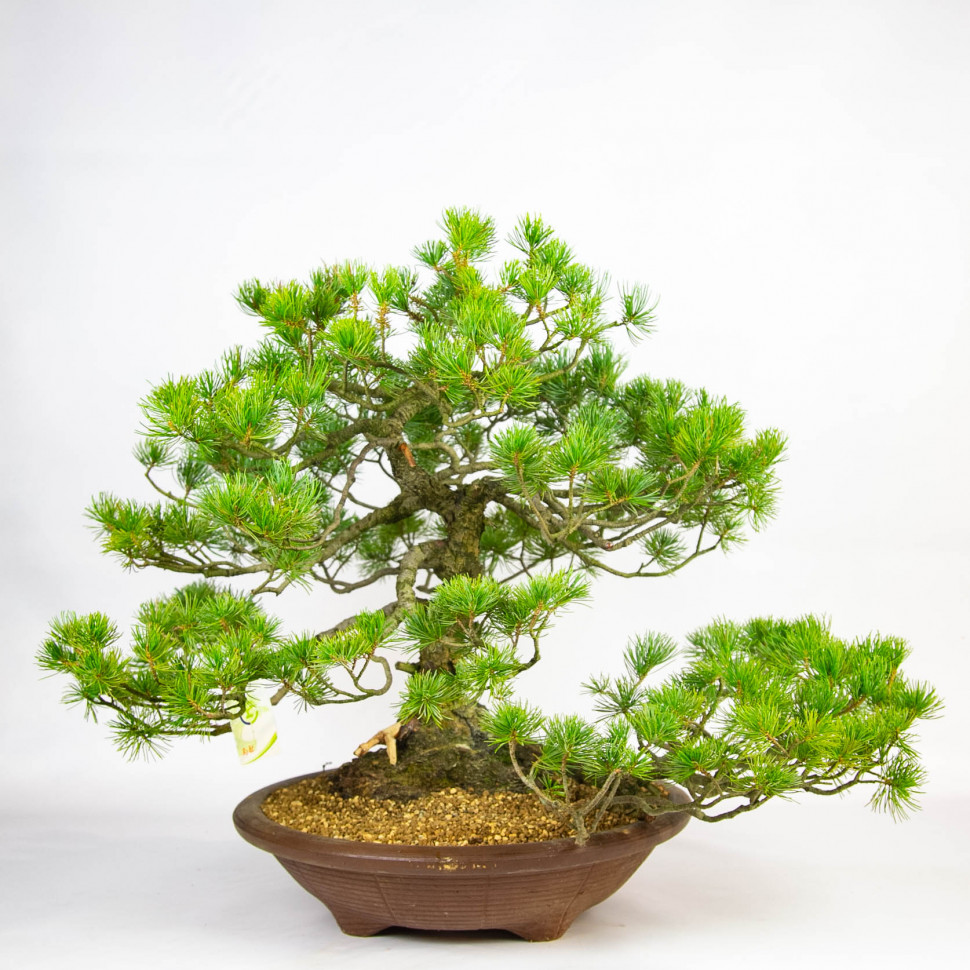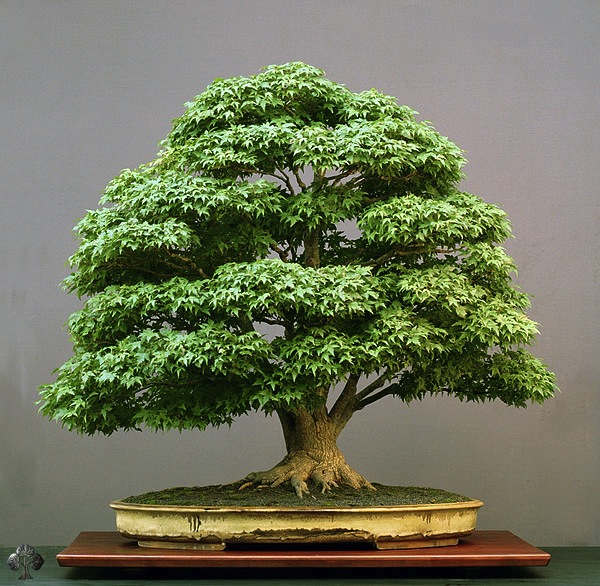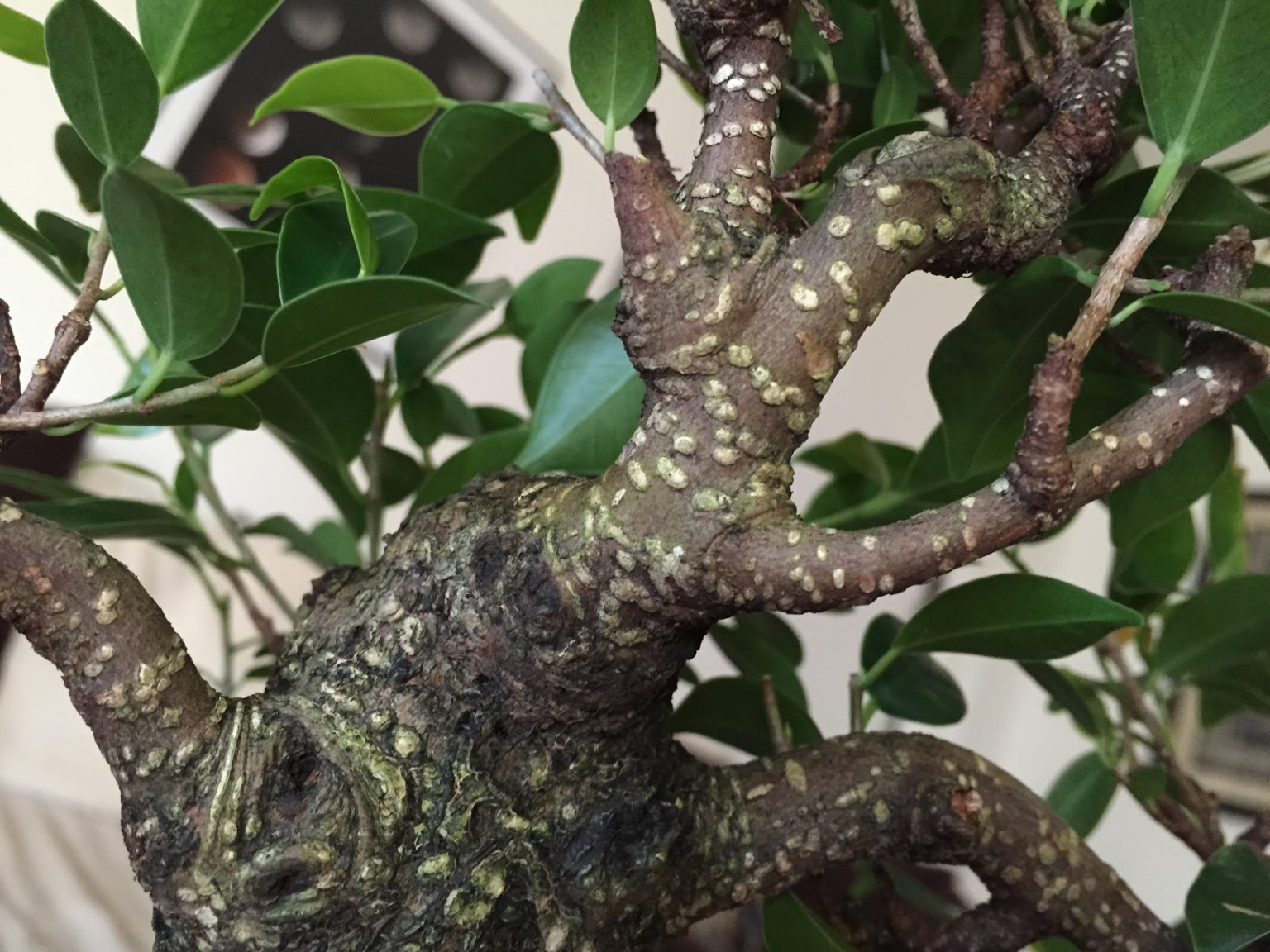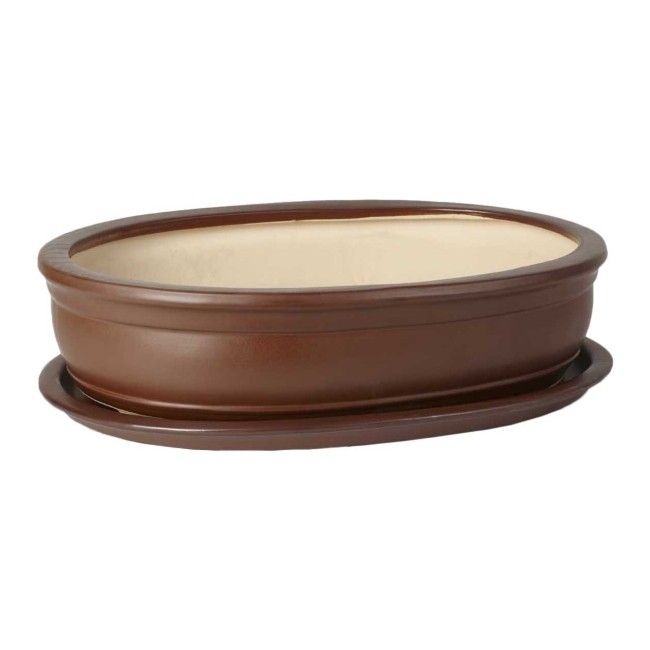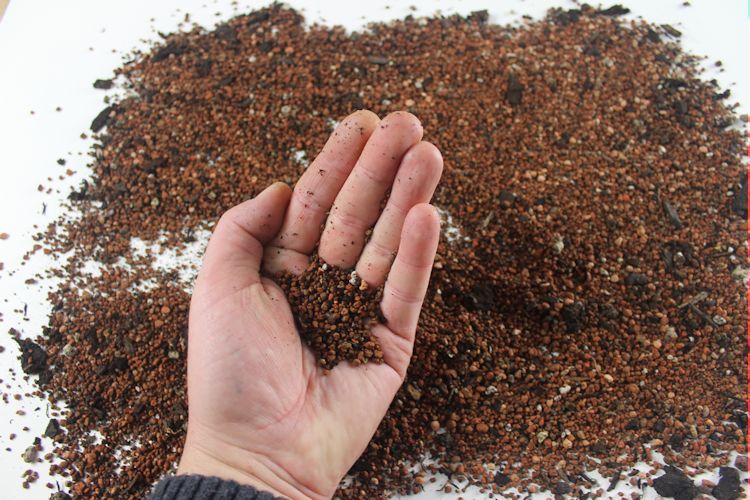Beginner bonsai growers, when reading an article or book about Bonsai, regularly encounter many incomprehensible terms. In order to facilitate understanding, this short dictionary of translations from Japanese and Chinese has been compiled.
- Akadama: (akadama) clay from Japan, having a granular structure. It is used in various mixtures for growing dwarf compositions, for which it is specially imported from Japan.
- Ara-kawacho: (ara-kawacho) A tree with rough bark.
- Ara-ki: (ara-ki) A freshly dug tree, like a promising bonsai.
- Bankan: (bankan) one of the main styles of the culture is translated as Strongly twisted trunk or "snake rings". Spiral. Most likely the term Hankan (hankan) means the same thing.
- Bonkei: (bonkei) Natural landscape on a tray (rocks, plants, animal figures, houses).
- Bunjingi: (bunjingi) Aesthetic, bohemian style. The trunk or trunks grow with a slight tilt and with branches at the top of the trunk. Container: round, round with raised edges.
- Chokkan: (tёkkan) A style with a strictly vertical trunk, pyramidal, evenly spaced branches. A variant of the Russian translation is mast style. Container: rectangular, oval, round.
- Daiki: (daiki) Mother plant (Tsugi-ho - cuttings)
- Eda-bari: (eda-bari, eda-buri) The arrangement and shape of branches.
- Eda-jin: (eda-jin) Artificially bleached branches.
- Edakiri: (edakiri) Pruning of branches.
- Eda-nuki: (eda-nuki) Removing unnecessary branches
- Eda-suki: (eda- suki) Pruning branches
- Eda-uchi: (eda-uchi) Harmony of branches.
- Eda-zashi: (eda-zashi) Pruning of branches.
- Fukinagashi: (Fukinagashi) Wind style. The trunk and branches are curved and grow in one direction, as if under the influence of the wind. Container: oval, rectangular.
- Gobo-ne: (gobo-ne) Taproot
- Gobo-tsuchi: (gobo-tsuchi) Coarse crumbly soil.
- Hakari: (hakari) Pruning of leaves (complete or partial defoliation) to initiate secondary vegetation after the current year's shoots have been hardened.
- Hamizu: (hamizu) Spraying leaves with water.
- Han-Kengai: (han-kengai) Half-cascade. Container: round, square.
- Hankan: (hankan) Bonsai with a very twisted trunk.
- Hariganekake: (hariganekake) Wrapping parts of wood with wire to bend the wrapped part.
- Hatiutsuri: (hatiutsuri) The compositional unity of a bonsai and the container in which it grows.
- Hokidachi: (hokidachi) Fan style. Straight trunk with spreading fan-shaped branches.
- Honbachi: (honbachi) Bonsai tray.
- Ikada: (ikada) Several trunks growing from one horizontal root lying on the surface, looking like a group of trees.
- Ishitsuki: (ishitsuki) Clinging to the rock. A miniature tree growing on top of or in a rock with roots growing into the rock and reaching down to the soil beneath the rock.
- Ju-sei: (ju-sei) The growth of a tree
- Ju-shin: (ju-shin) Tree top
- Kabudachi: (kabudachi) A bush. Several stems growing from one root.
- Kabuwake: (kabuwae) (Dividing) roots
- Kanju (kanju): Deciduous trees (with hard wood).
- Kannuki-eda: (kannuki-eda) An ugly branch that must be cut off.
- Kansui: (kansui) Watering.
- Karikomi: (karikomi) Pruning of branches and shoots.
- Kengai: (kengai) Cascade. The trunk and branches fall below the base of the container. Container: round, square.
- Kesho-tuschi: (kesho-tsuchi) Decorative soil, silver sand.
- Keto-tsuchi: (keto-tsuchi) Peat.
- Ko-eda: (ko-eda) A very graceful branch.
- Kokejun: (kokejun) A tapering trunk (gradually tapering toward the top).
- Komochi: (komochi) Bonsai with a double trunk
- Kuro-tsuchi: (kuro-tsuchi) Black soil
- Kuruma-eda: (kuruma-eda) An ugly branch that must be cut off.
- Mame-bonsai: (mame-bonsai) Bonsai less than 10 cm in height.
- Me-tsumi: (me-tsumi) Pinching of vegetative and flower buds.
- Meiboku: (meiboku) Ancient, antique bonsai
- Mi-momo: (mi-momo) Fruit-bearing bonsai.
- Misho (misho): Growing bonsai from a seedling
- Misho-momo: (misho-momo) Bonsai from a seedling.
- Mizu-gire: (mizu-gire) Drying out
- Mizu-goke: (mizu-goke) Sphagnum
- Moyogi: (moyogi) Upright, freely curved style. Free. Container: rectangular, oval, rounded.
- Ne-zashi: (ne-zashi) Root pruning
- Neagari: (neagari) Bonsai with protruding roots
- Nebari: (nebari) The base of a tree with roots protruding from the ground.
- Nejikan: Bonsai with a twisting trunk.
- Netsuranari: (netsuranari) Several trunks growing from one horizontal root lying on the surface, looking like a group of trees.
- Oki-goe: (okie-goe) Granular or powdered fertilizer.
- Oyaki: (oyaki) Mother tree in air layering.
- Roboku: (Roboku) Ancient, antique bonsai.
- Sabamiki: (sabamiki) Bonsai with a split trunk
- Saikei: (saikei) A landscape with rocks and plants, but no figures.
- Sankan: (sankan) Triple trunk. Three trunks growing from one root (father, mother, son).
- Sashi-ho: (sashi-ho) Trimming
- Sashi-ki: (sashi-ki) Cuttings.
- Seishi: (seishi) Formation of bonsai.
- Sentei: (sentei) Categorical pruning of perennial branches, trunk. Corresponds to the English term pruning.
- Shakan: (shakan) Slanted style. Container: rectangular, oval.
- Sharimiki: (sharimiki) A style with exposed dead wood.
- Shohaku: (shohaku) Coniferous trees (soft wood)
- Shohin-bonsai: (Shohin-bonsai) Bonsai no more than 15 cm in height.
- Shoki: (shoki), Yamadori-shitate (yamadori-shitate) (versus Misho) Bonsai made from plants found in nature.
- Sin-edakiri: (sin-zdakiri) Pruning of the current year's shoots. Corresponds to the English term trimming.
- Sin-nuki: (sin-nuki) Removing unfurled bamboo leaves (literally, exposing the core) to restrict its vertical growth.
- Sokan: (sokan) Double trunk. Two trunks growing from one root (father, son).
- Suiban: (suiban) A flat container without drainage holes. Sui-ban is a water container. Used to display suiseki.
- Suiseki: (suiseki) a composition representing a miniature rock landscape from Chinese San Sui- Sek - stones used in the landscape.
- Tachia-gari: (tachiagari) The lower part of the trunk. Standard.
- Tangei: (tangei) Bonsai material.
- Tekishin: (tekishin) Removal of shoots.
- Tocho-shi: (tochoshi) A branch of excessive length.
- Tokonoma: (tokonoma) a specially carved niche for displaying various aesthetic Ikada objects in a Japanese home. It is usually used to display small paintings, bonsai, ikebana, calligraphy, etc.
- Toriki: (toriki) Air layering technique.
- Toriki-momo: (toriki-momo) Bonsai obtained from air layering.
- Tsugi-ho: (Tsugi-ho) Cutting (Daiki-mother plant).
- Tsugi-ki: (tsugi-ki) Technique of grafting bonsai.
- Uekae: (uekae) Transplantation.
- Ueki: (ueki) A plant, tree planted in a garden or container.
- Yamadori: (yamadori) literally extracting trees from nature with the subsequent purpose of forming bonsai (digging, pruning branches, roots). It is done in autumn or spring.
- Yamadori-shitate: (yamadori-shitate) Same as Shoki (shoki).
- Yose-ue: (ёсэ-уе) Group planting, grove. Several plants in a flat container representing a grove. The number of plants is odd. Container: rectangular, oval (very shallow, not deep).

